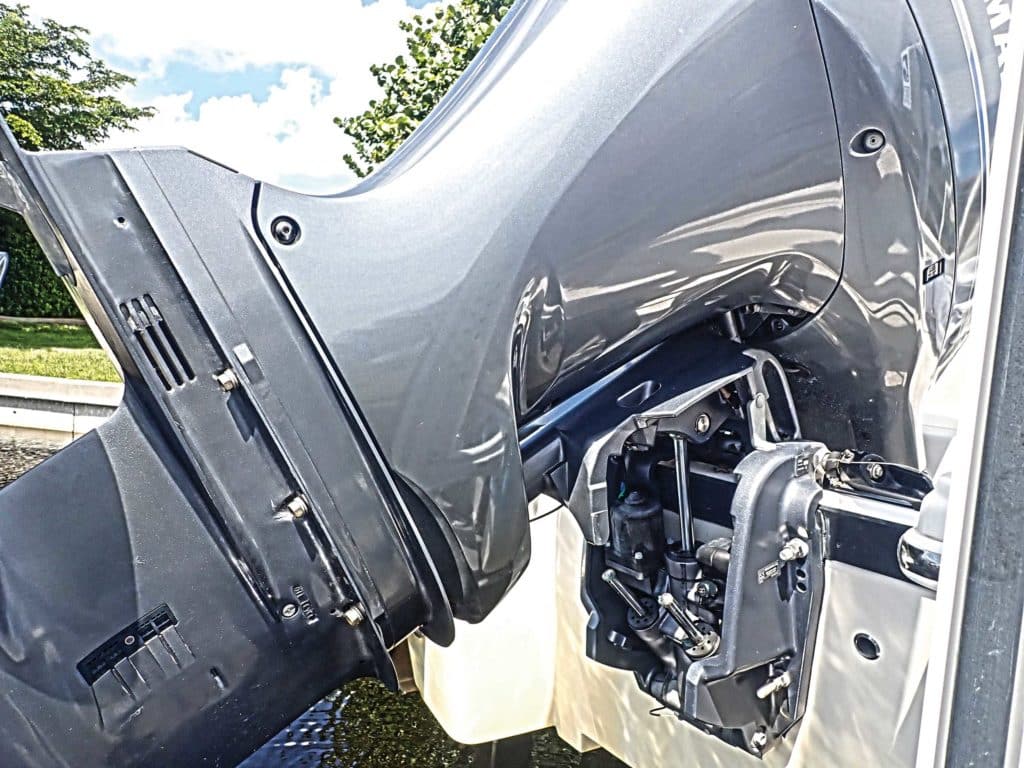
Outboard trim-and-tilt systems require regular service. I suggest the following procedures be included in an outboard owner’s maintenance routine and that boaters also familiarize themselves with the procedure for adding fluid to the trim-and-tilt system.
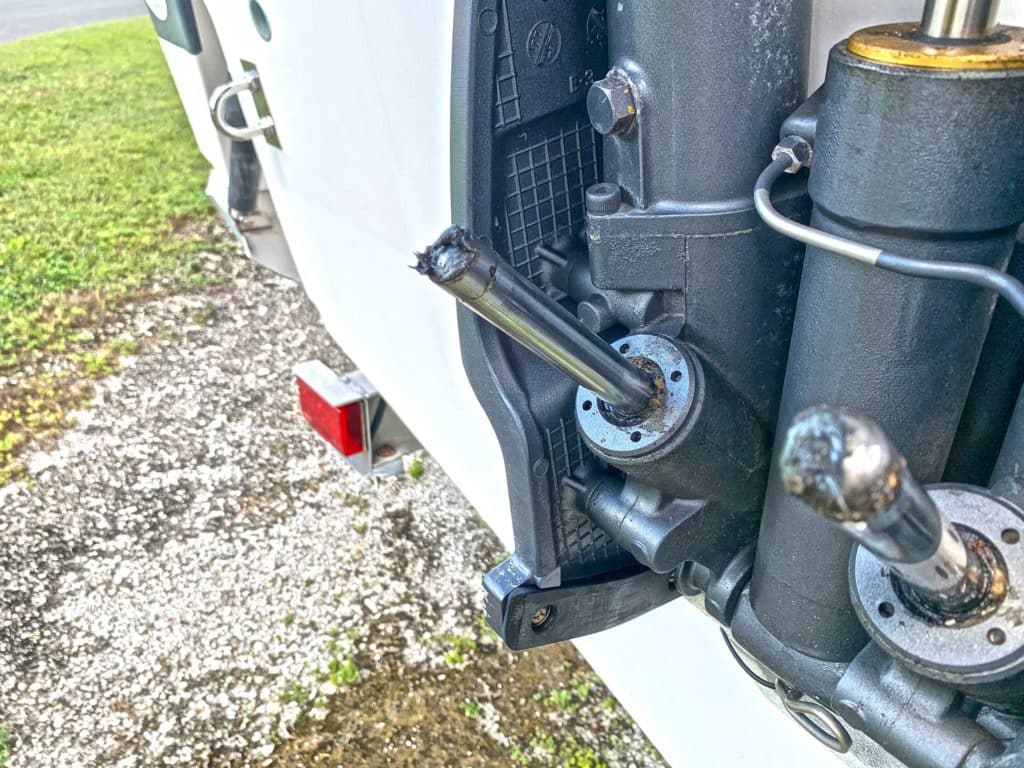
Greased Rams
So simple: Squeeze some grease on your fingertips and apply a healthy dollop to the tips of the trim rams. This inhibits wear and quiets the screeching sound that can occur when grease wears off.
Grease the Tilt Tube
Look for the tilt tube at the front of your engine, where it connects to the transom. Use a grease gun to apply waterproof grease to the grease fittings. Watch for the new grease pushing out the old grease, your indication to stop squeezing the grease gun. Wipe off excess.
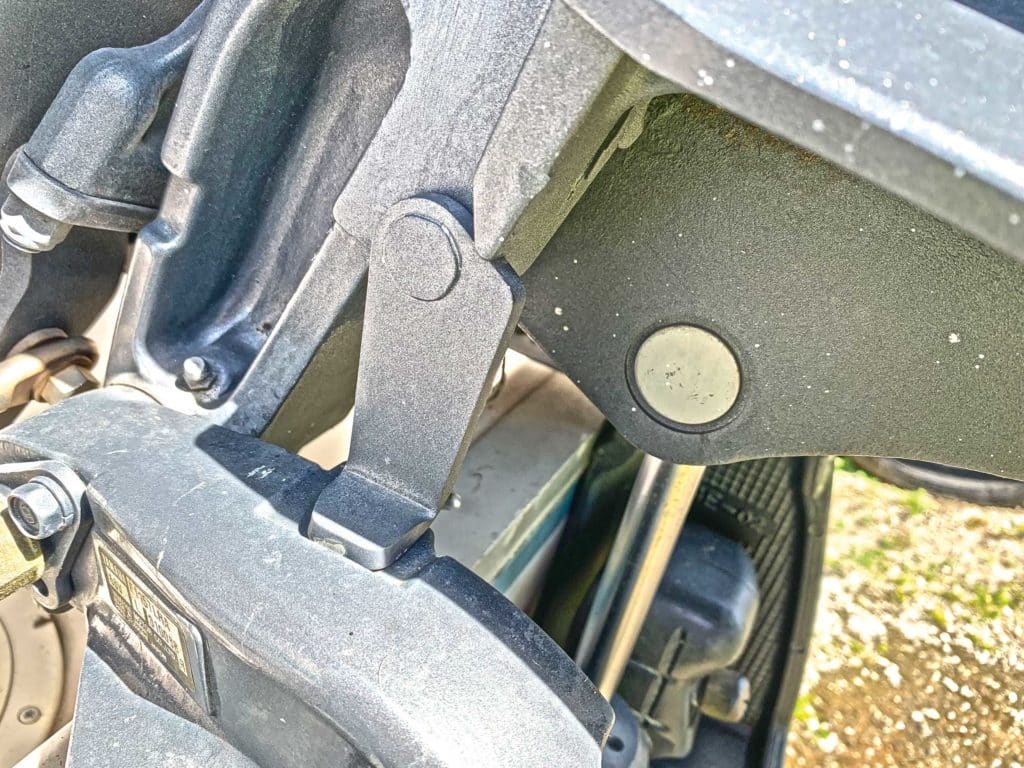
Stationary Support
Always use the tilt support bracket while the boat is docked or moored with the engine tilted up. This is a swing-down support found on top of the engine mounting bracket. Tilt the engine all the way up, deploy the support, trim the engine down until it rests on the support, and then continue pressing the trim switch until the rams are fully retracted. This inhibits corrosion and fouling on the rams.
Read Next: Support an Outboard While Trailering
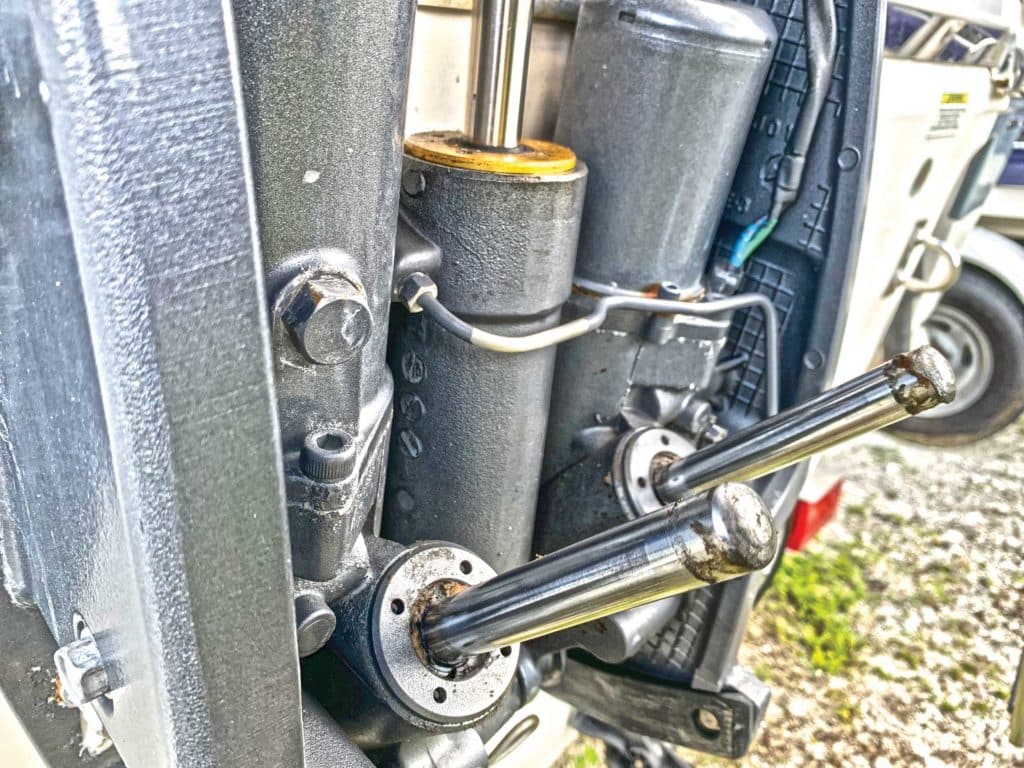
Adding Hydraulic Fluid
The trim-and-tilt system is electrohydraulic and sometimes may need fluid added, often indicated by failure to trim fully or “slipping down” after tilt-up. The fill cap is a hex-headed or slotted screw on top of the hydraulic reservoir. The cylindrical reservoir is located between the uprights of the engine mounting bracket. Due to this location right at the waterline, the boat should be on land in a bow-down attitude to level the reservoir, which is at the same negative 13- to 15-degree angle as the transom. Arrange this by cranking down the trailer’s tongue jack. Don’t have a trailer? Borrow one, or seek a boatyard for this job.
1. Tilt up the outboard and put the support bracket in place. An engine falling on you or your hands can be catastrophic.
2. Remove the screw.
3. Fill to just overflowing. Wipe excess.
4. Tilt the engine up and down to bleed air out.
5. Add more fluid (if it will take some).
6. Repeat steps 4 and 5 as needed.
7. Reinstall the screw.
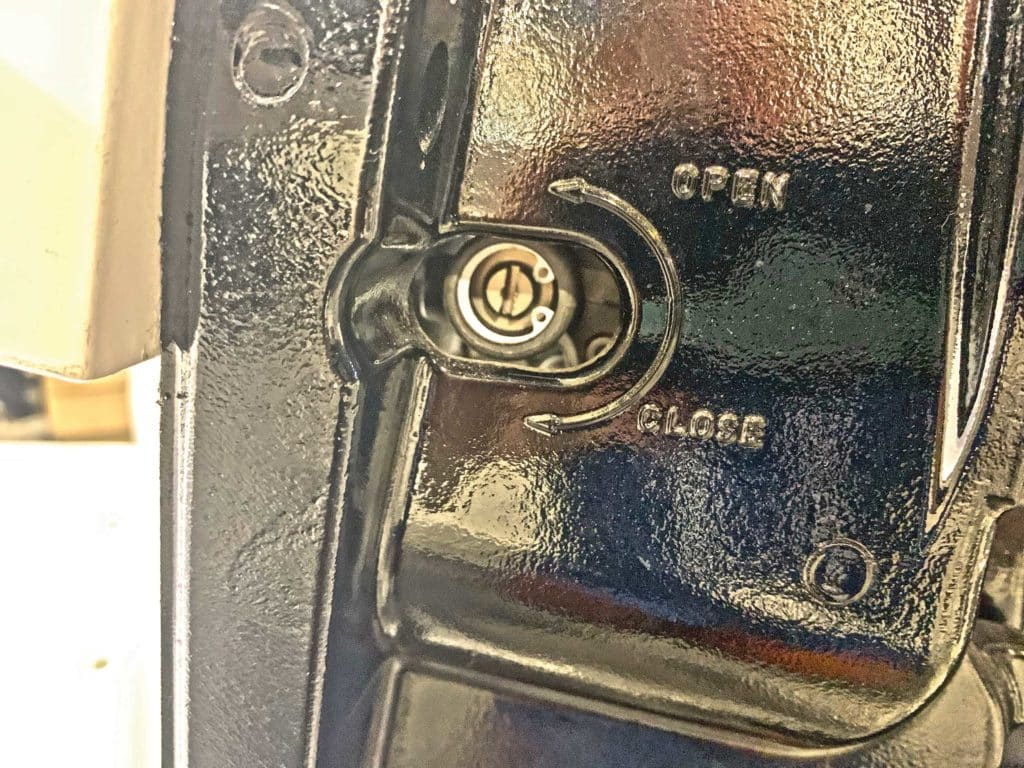
Topping off the fluid is often a temporary fix. Even though a leak might not be evident, you may have one and need to take your engine to a pro to fix it.









